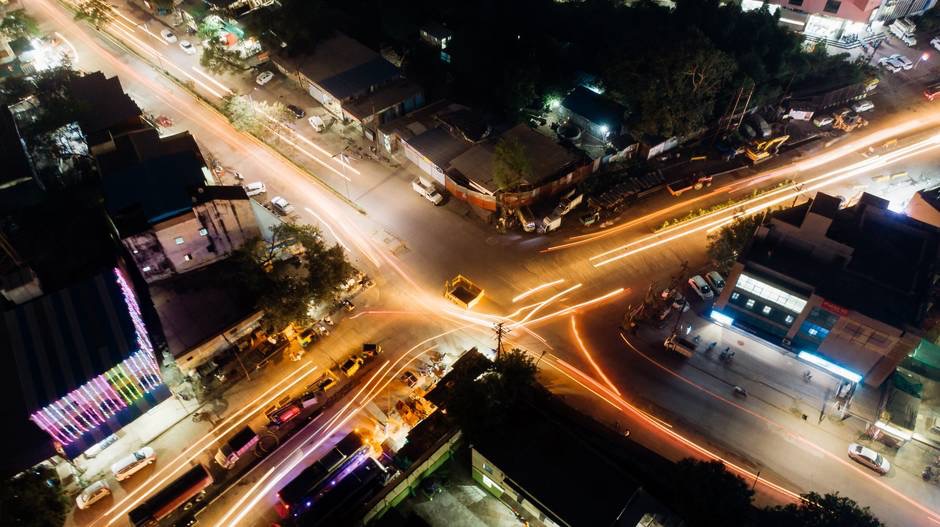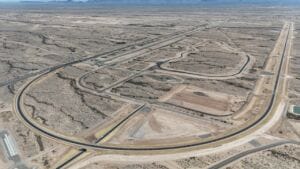Red-light cameras, speed cameras, and general traffic cameras are something we are all familiar with seeing, but how much do we know about how they work?
We see traffic cameras every day, but have you ever wondered how they work or what they do? Not all traffic cameras serve the same purpose. Some are meant to keep your driving habits in check, while others are there to keep traffic moving.
With their growing presence around the world, traffic cameras are a part of life and it’s wise to know what they’re there for. Keep reading to learn 7 things you should know about traffic cameras!
1. Speed Cameras Really Do Cut Down On Speeding
When you’re zooming down the highway and spot a speed camera, you’ve probably wondered if it’s useful for anything other than getting on your nerves. Even though nobody likes to get caught speeding, these cameras can cut down on speeding in the areas they serve.
Speed cameras do what their name suggests: track speed. You’ll find them in neighborhoods along stretches where drivers are known to speed, or on city roads. Sometimes these cameras are big and obvious, and they may even show you your speed as you drive by.
Not all speed cameras are fixed in a specific neighborhood. Sometimes police officers will use mobile speed cameras, otherwise known as radars. These can be handheld or mounted within their cars.
In under one second, the camera can record your speed by sending a laser beam toward your vehicle. The beam can sense the direction you’re going and the rate of speed.
Only 8 states have laws preventing the use of speed cameras, while 21 states allow them. So there’s a pretty good chance you’ll come across them if you travel throughout the country. Be prepared to slow down when you see the lens aimed at your car!
Do these cameras work? Yes. Many studies suggest that they do reduce the number of accidents and speeding incidents on the roads.
2. Mobile Speed Cameras Are Hard To Detect
Because mobile speed cameras are difficult if not impossible to see when you’re driving, they tend to be more effective. Traditional speed cameras can be easy to spot — especially if you cover the same route each day. Once you know where one is, it’s easy to tap the breaks and avoid getting slapped with a ticket.
With mobile cameras, that’s not the case. If you can’t see the camera, you probably won’t know to slow down. The stealthier option among law enforcement officials, mobile speed cameras go undercover to get the job done.
That’s also what makes them drive drivers crazy. You won’t even know that you’ve received a ticket until it arrives in the mail!
3. Red Light Cameras Watch You From Busy Intersections
These cameras were approved for use in the U.S. in 1993 and have become a popular — but controversial — choice in many cities. Red light cameras sit at intersections in busy areas. And they catch you at the moment your car starts to go through a red light.
If you look at a traffic light, you might notice one of these cameras mounted to it. In other cases, the cameras stand separately. Once the light turns red at an intersection, that’s when these little cameras fire up.
They’ll take a picture of your license plate if you cross the designated “stop line.” When you’re behind the wheel, make sure that you don’t try to plow through the intersection when the light is yellow. If it changes to red when you’re not on the other side, you might just get that dreaded ticket in the mail.
These cameras will capture your location, the date, speed, and the amount of time that goes by once you’ve entered the intersection. There are triggers within the pavement that work with the camera to know when you’ve crossed the line.
Many drivers view these cameras as a sneaky presence that’s more interested in money than safety. How effective are they? That’s debatable.
Some studies suggest that these cameras cause more accidents than they prevent. Research from the University of South Florida showed a 40% increase in accidents at intersections in North Carolina.
The reason for the higher accident rate is simple. When drivers realize a camera is waiting to catch them at the intersection, they slam on the breaks to try to avoid getting a ticket. When they do that, the car behind them rear-ends them.
The stats aren’t all negative, though. The city of Chicago saw a 40% decrease in accidents that resulted in injuries. The results nationwide are mixed, but many cities continue to add red light cameras in an effort to minimize accidents.
4. Traffic Sensor Cameras Track Traffic Flow
If you’ve noticed a rectangular or cylindrical camera attached to a pole jutting up from a traffic light, don’t let this one scare you. It’s a traffic sensor camera, and it isn’t there to check your speed. Besides, its high visibility makes it too obvious to catch speeders!
Traffic sensor cameras are there to make sure that the traffic signals change at the right time. To do this, they look at the density of traffic. These cameras don’t track license plates and the footage doesn’t factor into anything regarding your driving habits.
Know that these cameras are there to help make your commute a little smoother!
5. ANPR Cameras Track Your License Plates
Automatic Number Plate Recognition (ANPR) cameras are an effective way to record license plate numbers on cars. Like traffic sensor cameras, these cameras are not used to catch you speeding.
You’ll find these cameras in parking lots, though they are present in police vehicles, too. When a police car pulls up behind you, an ANPR camera mounted within the car can scan your license plate and learn if there is any criminal activity in your records.
As you can imagine, these cameras have impressive lenses with highly-calibrated shutter speeds to ensure that the images are clean and readable.
How do you spot these cameras? Because they emit light, you’ll see the telltale LED flash that alerts you to their presence.
Some critics are wary of the fact that these cameras are primarily used to track a driver’s location, which seems like an invasion of privacy.
6. Traffic Cameras Help Keep Drivers Safe
Though speed cameras have their fair share of critics, they generally get good marks as an effective weapon against speeding, accidents, and injuries. They help build greater awareness among drivers who might be pushing the limits of safe driving. Once you know about the cameras in your area (and have to pay a hefty ticket), you’ll be a more aware driver.
Camera tickets provide a more objective approach to issuing traffic citations, too. We ofter picture an image of the cunning driver trying to talk his way out of a ticket. This model has gone by the wayside with the introduction of cameras.
Instead, the ticket and all relevant information arrive in the speeder’s mailbox. No negotiations happen!
Another benefit of cameras? Cameras can help keep officers safe, too, since traffic enforcement can be a dangerous job. If a camera is issuing the ticket, then it saves the officer from what could be a confrontational experience when they pull someone over for speeding.
Even though cameras might be frustrating when you’re in a hurry, remember that they can help you know when to ease up on the accelerator. They might just keep you from a ticket or an accident. And having a clean driving record can help you save on car insurance!
7. And Traffic Cameras Save Money
With red-light cameras, the camera does the work of catching people who speed through red lights. Before their introduction to the traffic camera world, a police officer would have to see a speeding violation happen. These cameras help make sure that officers can direct their attention to more high-impact causes.
Cameras can make money, too. By catching people running stop signs or red lights, they generate revenue from the tickets. This is what can make these cameras controversial, though.
As an example, Cedar Rapids, Iowa made $3 million per year over six years from the cameras installed in the city. The manufacturer of the cameras did pretty well, too. Some residents wondered if the cameras were there only for the money.
To avoid controversy, experts advise that public officials and law enforcement choose cameras and locations based on the clear need to make conditions safer — not to generate revenue.
The Bottom Line
Traffic cameras are everywhere, but they don’t all do the same thing. The next time you’re out, keep your eyes peeled at intersections and proceed with caution. You don’t want to find yourself getting a ticket in the mail.
When you want to know more about the latest news and information, check back with us for the most current coverage!




